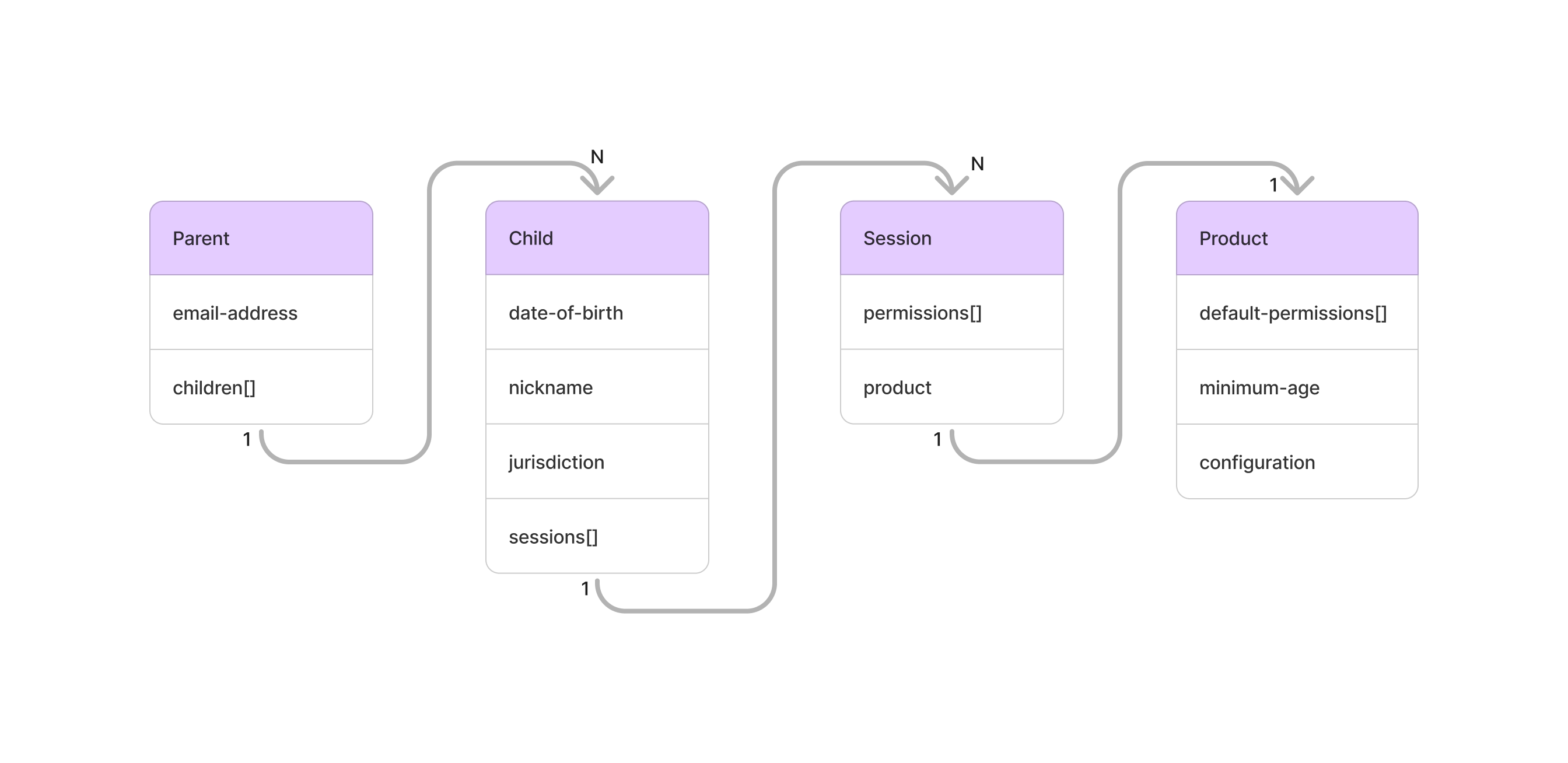Access, features, and consent
The concepts in this section are essential for implementing Verifiable Parental Consent (VPC) flows. These concepts help you understand how to collect age information, obtain parental consent, manage permissions, and track player access to features in your game or application.

These concepts apply specifically to VPC flows (consent flows), not to age verification flows. Age verification flows are simpler and don't involve sessions, permissions, consent challenges, or family configuration.
Why these concepts matter
VPC flows involve multiple interconnected concepts that work together to ensure compliance with parental consent regulations:
- Age collection: Determining a player's age and whether parental consent is required
- Consent management: Obtaining and tracking parental approval
- Permission control: Managing which features players can access based on their age and consent status
- Session management: Tracking player permissions and consent state over time
Understanding these concepts helps you build compliant applications that properly handle parental consent while providing appropriate user experiences for players of different ages.
Core concepts
Age collection and consent
- Age gate: The mechanism for collecting and verifying user age before allowing access
- Verifiable Parental Consent (VPC): The regulatory requirement and process for obtaining parental consent for minors
- Challenges: How consent challenges work when parental approval is required
Session and permission management
- Sessions: Long-lived objects that track player permissions and age status
- Permissions: How to control access to game features based on age and consent
- Permissions upgrade: Requesting additional permissions after initial consent
Parent preferences and features
- Trusted adult preferences: How parents configure consent and permission preferences
- Essential features: Features required for a product to function, even if they require consent
- Data-lite mode: Providing limited access while waiting for parental consent
Getting started with VPC flows
If you're new to VPC flows, start with these foundational concepts:
- VPC - Understand the regulatory requirement and basic flow
- Age gate - Learn how to collect age information
- Sessions - Understand how permissions are tracked
- Challenges - Learn how consent challenges work
For implementation guidance, see the Get started section or the VPC quick start guide.
What data is stored
The diagram below is a high-level view of what data is stored in k-ID for kids, trusted adults, and sessions.

Verified parent data and child data is maintained independently across all Products. Once a parent is verified, verification doesn't need to be done again for new games.
Confirmed date of birth
If consent is required, a trusted adult is asked to confirm the player's date of birth which results in a change from what the player entered in the age gate or what was acquired from a Platform or existing account. The confirmed date of birth for the player is returned in the dateOfBirth field from the /age-gate/check and /session/get API.
Email of the trusted adult
The email of the approving trusted adult for the current player is returned in the approverEmail field of the response from /challenge/get-status. This email address can be associated with the player account in the game for use in customer support cases.